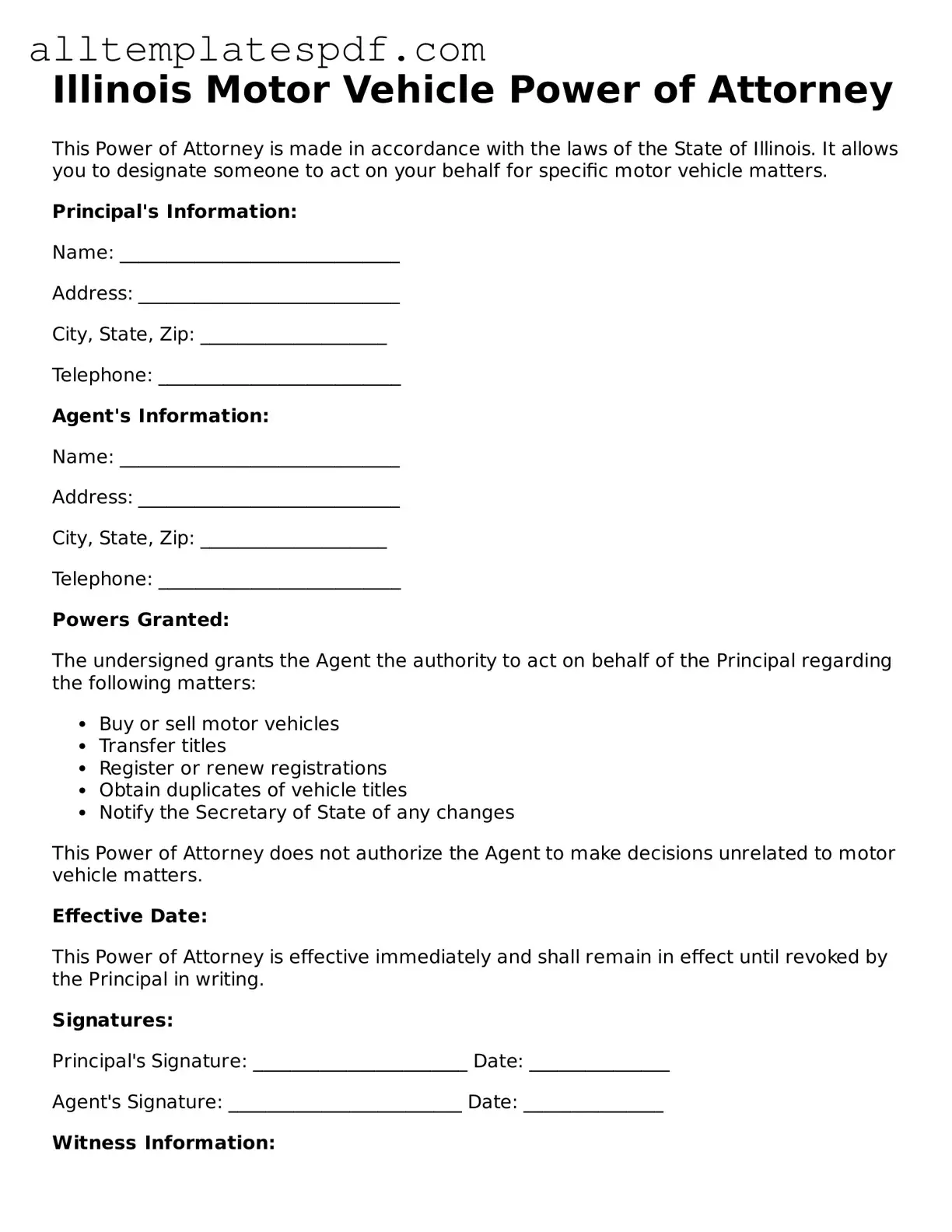Filling out the Illinois Motor Vehicle Power of Attorney form can be straightforward, but mistakes often occur. One common error is failing to provide all required personal information. This includes the names and addresses of both the principal and the agent. Omitting this information can lead to delays or even rejection of the form.
Another frequent mistake is not signing the document. The principal must sign the form for it to be valid. If this step is overlooked, the power of attorney will not take effect, leaving the agent without authority to act on behalf of the principal.
People sometimes forget to date the form. Including the date is crucial, as it indicates when the authority was granted. A missing date can create confusion and may complicate matters later on.
Inaccurate vehicle information is also a common issue. The form requires specific details about the vehicle, such as the make, model, and VIN. Providing incorrect information can invalidate the power of attorney for that particular vehicle.
Another mistake involves selecting the wrong type of power of attorney. The Illinois form offers options for limited or general authority. Choosing the wrong type can lead to misunderstandings about what the agent is permitted to do.
Some individuals neglect to check the box that indicates whether the power of attorney is effective immediately or upon a specific event. This oversight can lead to confusion about when the agent can start acting on behalf of the principal.
People may also forget to have the form notarized if required. While not all power of attorney forms need notarization, some do. Failing to notarize when necessary can render the document ineffective.
Inadequate witness signatures can be problematic as well. If the form requires witnesses, ensuring they sign is essential. Missing witness signatures can lead to complications in the future.
Another mistake involves not keeping copies of the completed form. It is important for both the principal and the agent to have copies for their records. Without copies, tracking the authority granted can become challenging.
Lastly, individuals sometimes fail to review the completed form thoroughly before submission. Taking a moment to double-check all entries can help catch errors that might otherwise lead to complications down the line.
